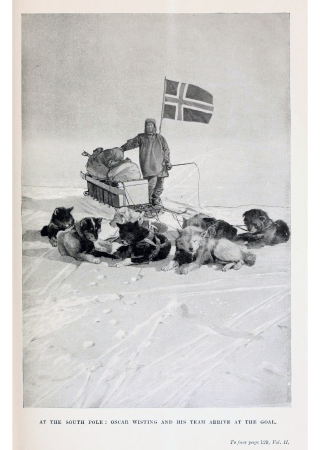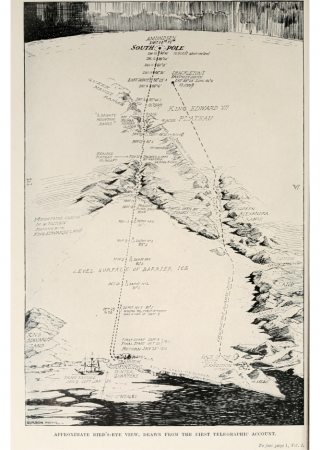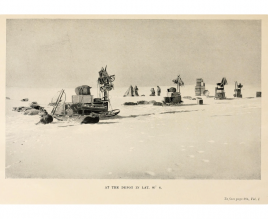Amundsen's S. Pole expedition
- …Olaf Bjaaland, was the first to set off on Amundsen's expedition to the South Pole, he died in June 1961, aged 88; the last surviving member of the expedition?
- …Scott's expedition arrived at the South Pole a full month after Amundsen's left it?
- …besides the South Pole, Amundsen had another 'first' to his credit: using his 13.5 meter vessel Gjöa, he was the first to sail through the Northwest Passage?
- …during the trip to the South Pole, Amundsen also discovered an unknown mountain range, up to 4,500 meters high in some places, which he named the Queen Maud range?
- …Amundsen died during a rescue expedition to find the lost airship Italia? His body was never found.
- …Amundsen's ship Fram may be viewed today in an Oslo museum on the Bygdøy peninsula?
- …Amundsen was severely criticized for killing some of his sled dogs during the expedition, to use as a food source for the remaining dogs?
- …Today Amundsen's name is borne by the sea that borders Marie Byrd land in the Antarctic, and by the channel between Victoria Island and northwest Canada?
- The expedition got to Antarctica on the ship Fram.
- Amundsen had over 100 well-trained dogs on his expedition.
- On December 14th, 1911 at 3pm, Amundsen's team reached the South Pole.
- The men who accompanied Amundsen on his trip from the winter camp Framheim in the Bay of Whales to the South Pole and back were, Hilmer Hanssen, Sverre H. Hassel, Olva Olavson Bjaaland and Oscar Wisting.
- The trip from the Bay of Whales to the South Pole used 52 dogs and 4 sleds.
- They reached the pole with 16 dogs.
In June 1910, Amundsen set sail in the ship Fram from Oslo in Norway; the start of his voyage to the South Pole. The Fram landed in Antarctica, deep in the Bay of Whales by the Ross Ice Shelf in January of 1911. He established a camp here, from which he set up supply camps in stages toward the pole. October 20th, 1911 he set out from his winter camp Framheim with four guides, four sleds and 52 dogs, across the Ross Ice Shelf, and on November 3rd he arrived at the southernmost supply camp. Amundsen had Siberian polar dogs and wisely reduced the weight of his sleds from 75 to 22 kilos. Imitating Eskimos, he clothed his team with light leather suits, which were loose fitting and weighed only 4.5 kilograms. Since Amundsen did not find as wide a path as the Beardmore Glacier, his party had to ascend to the Polar Plateau via a narrow ice tongue, 3,000 meter high, which he named Alex Heiberg glacier. On December 13th, they camped 24 kilometers from their goal and the next day, at 3pm they reached 90°south latitude - the South Pole, where they erected the Norwegian flag. To be certain that they had actually reached the pole, they made a twenty-kilometer journey around the camp. The entire region was named Haakon VII Plateau, in honor of the new Norwegian king. . On December 17th they set out on the return journey to Framheim.




